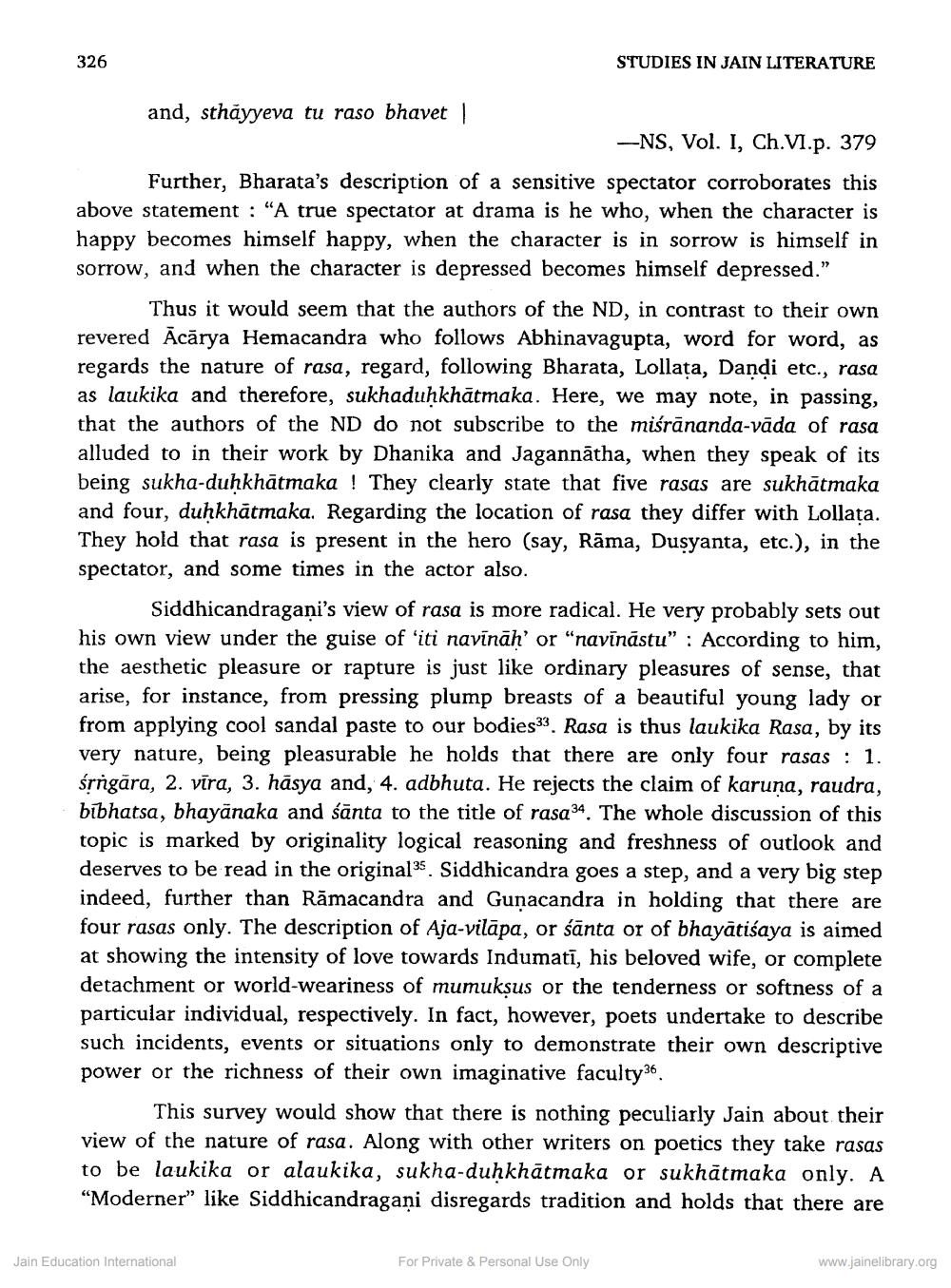________________ 326 STUDIES IN JAIN LITERATURE and, sthayyeva tu raso bhavet | --NS, Vol. I, Ch.VI.p. 379 Further, Bharata's description of a sensitive spectator corroborates this above statement : "A true spectator at drama is he who, when the character is happy becomes himself happy, when the character is in sorrow is himself in sorrow, and when the character is depressed becomes himself depressed." Thus it would seem that the authors of the ND, in contrast to their own revered Acarya Hemacandra who follows Abhinavagupta, word for word, as regards the nature of rasa, regard, following Bharata, Lollata, Dandi etc., rasa as laukika and therefore, sukhaduhkhatmaka. Here, we may note, in passing, that the authors of the ND do not subscribe to the misrananda-vada of rasa alluded to in their work by Dhanika and Jagannatha, when they speak of its being sukha-duhkhatmaka ! They clearly state that five rasas are sukhatmaka and four, duhkhatmaka. Regarding the location of rasa they differ with Lollata. They hold that rasa is present in the hero (say, Rama, Dusyanta, etc.), in the spectator, and some times in the actor also. Siddhicandragani's view of rasa is more radical. He very probably sets out his own view under the guise of 'iti navinah' or "navinastu" : According to him, the aesthetic pleasure or rapture is just like ordinary pleasures of sense, that arise, for instance, from pressing plump breasts of a beautiful young lady or from applying cool sandal paste to our bodies33. Rasa is thus laukika Rasa, by its very nature, being pleasurable he holds that there are only four rasas : 1. srngara, 2. vira, 3. hasya and, 4. adbhuta. He rejects the claim of karuna, raudra, bibhatsa, bhayanaka and santa to the title of rasa34. The whole discussion of this topic is marked by originality logical reasoning and freshness of outlook and deserves to be read in the original35. Siddhicandra goes a step, and a very big step indeed, further than Ramacandra and Gunacandra in holding that there are four rasas only. The description of Aja-vilapa, or santa or of bhayatisaya is aimed at showing the intensity of love towards Indumati, his beloved wife, or complete detachment or world-weariness of mumuksus or the tenderness or softness of a particular individual, respectively. In fact, however, poets undertake to describe such incidents, events or situations only to demonstrate their own descriptive power or the richness of their own imaginative faculty36. This survey would show that there is nothing peculiarly Jain about their view of the nature of rasa. Along with other writers on poetics they take rasas to be laukika or alaukika, sukha-duhkhatmaka or sukhatmaka only. A "Moderner" like Siddhicandragani disregards tradition and holds that there are Jain Education International For Private & Personal Use Only www.jainelibrary.org




